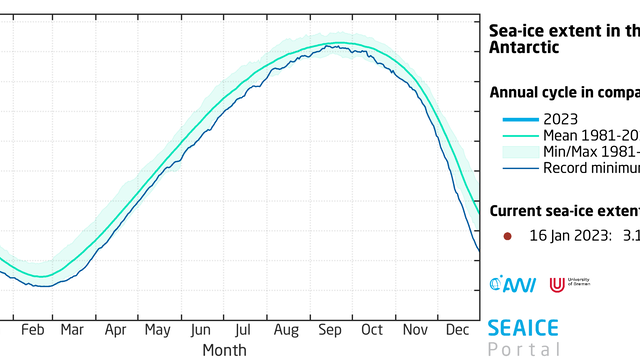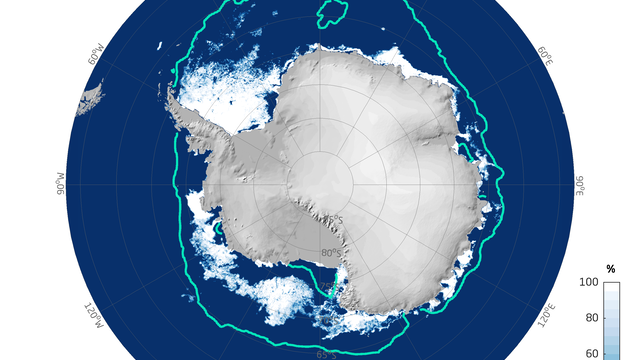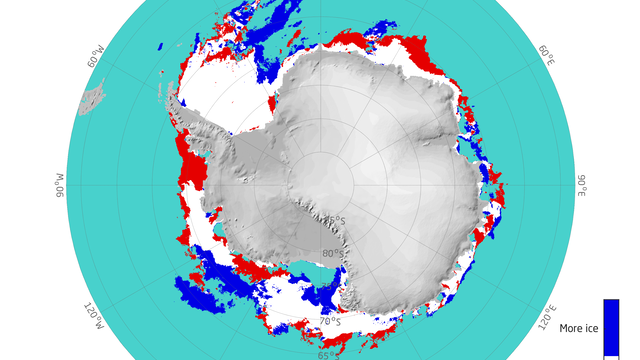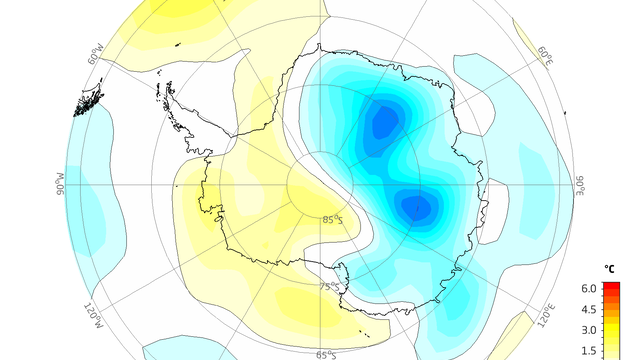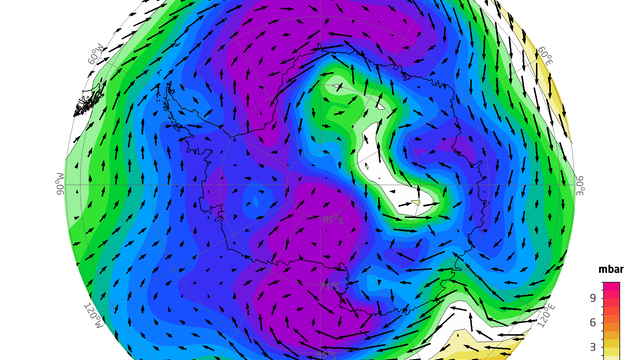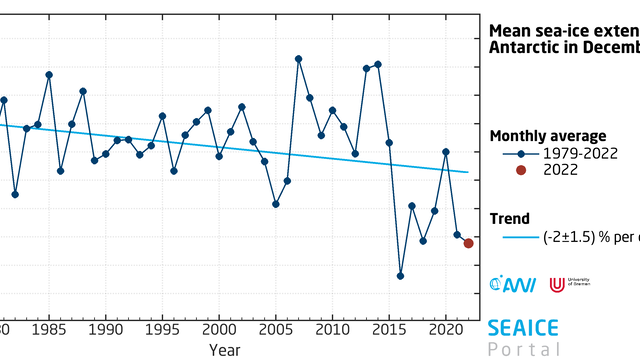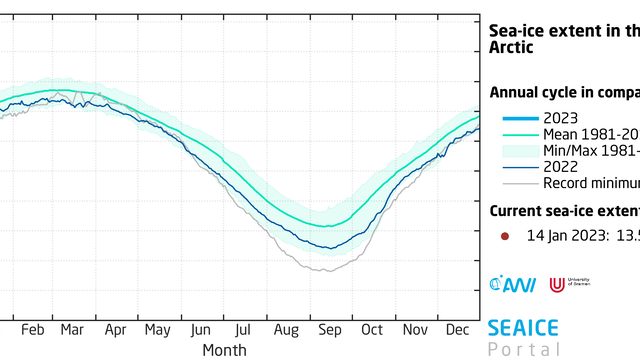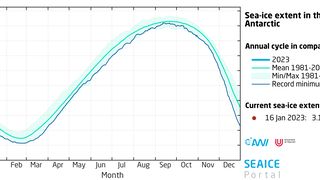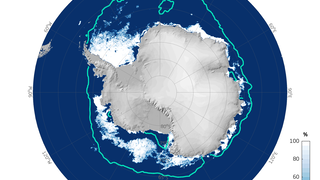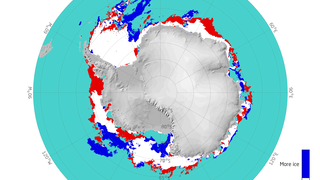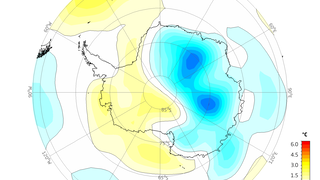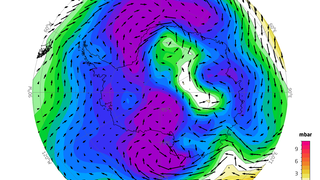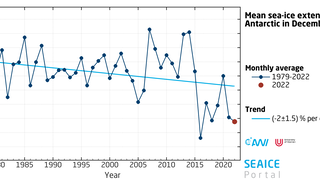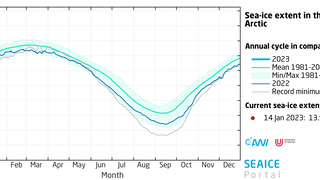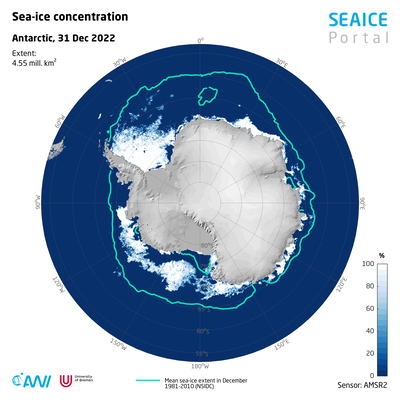21 December marks the astronomical first day of winter in the Northern Hemisphere and first day of winter in the Southern Hemisphere, referred to as the winter solstice and summer solstice, respectively. The solstice is always an extremely short or extremely long day, because the majority of the sun’s course takes place below or above the horizon. North of the Arctic Circle, the sun never rises on the winter solstice or, depending on the latitude, can’t be seen for several weeks or even months.
Antarctic summer includes record low sea-ice extent in December
In the Antarctic, sea-ice retreat has progressed considerably. On the summer solstice, after which the sun doesn’t set for several months in many areas south of the Antarctic Circle, the sea-ice extent is extremely low. After 2016 and 2018, 2022 saw the third-lowest recorded sea-ice extent in the Antarctic, with 6.87 million km² at the beginning of summer (Figure 1). On 24 December, the sea-ice extent dropped below the previous record low daily value (from 2018) and has remained below the lowest-ever observed ice-extent curve for the season ever since. On 31 December, the level was ca. 550,000 km² below the previous record low, an area roughly the size of France . Particularly in the Bellinghausen and Amundsen Seas, the sea ice has melted completely, while an extensive polynya has formed in the Ross Sea and the ice has disappeared in many areas (Figure 2). Here, the ice concentration is in some cases only 40 – 60%, making further and rapid ice retreat likely, similarly to the situation in large expanses of the Weddell Sea. If we compare the sea-ice extents for the second half of December in 2022 and 2018, the years with the lowest extent to date , it becomes clear which regions of the Antarctic have experienced the most intensive melting, namely in the Bellinghausen and Cosmonauts Seas (Figure 3). This could be the result of a prolonged air temperature anomaly (Figure 4a) of up to 1.5° C above the long-term average for the years 1971 – 2000, which reaches from the Weddell Sea across West Antarctica to the Ross Sea. The past two months were characterised by recurring periods with strong circumpolar winds and below-average atmospheric pressures (Figure 4b) over the Antarctic continent. This led to powerful westerly winds that tore across the Antarctic Peninsula. The general effect was increased melting, above-average air temperatures over the Weddell Sea, and offshore winds from the Antarctic continent, which in turn opened up polynyas and accelerated ice retreat. This wind pattern can be explained by the Southern Annular Mode (SAM) index, a parameter used to measure the intensity of circumpolar wind circulation. It was predominantly in a positive phase in 2022 and was most pronounced in the last quarter of the year.
With an average sea-ice extent of 8.39 million km², December 2022 saw the second-lowest value (after 2016) ever recorded in the long-term statistics (Figure 5). If weather conditions remain unchanged, we may see a new record low sea-ice extent this February, following on the heels of last year’s record low.
Contact
Questions?
infoprotect me ?!meereisportalprotect me ?!.de
Graphics
